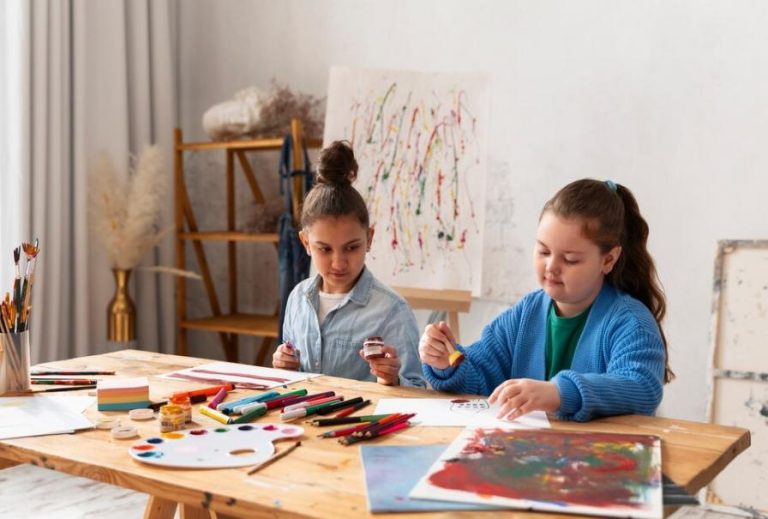Art is not just about creating something beautiful; it’s a powerful tool that nurtures creativity and cognitive development, especially in young children. Pre-K art classes play a crucial role in fostering these skills early on, providing a foundation that goes beyond simple creativity to encompass emotional expression, fine motor skills, and even social interaction. Here’s a closer look at why pre-K art classes are invaluable for young children.
Development of Fine Motor Skills
One of the fundamental benefits of pre-K art classes is the development of fine motor skills. Children engage in activities like painting, drawing, cutting, and pasting, which require precise hand movements. These activities help children strengthen their hand-eye coordination and dexterity, laying a solid foundation for later skills such as writing and tying shoelaces.
Through the tactile experience of handling different art materials like crayons, clay, and paintbrushes, children learn to manipulate objects with control and precision. This hands-on approach not only enhances their motor skills but also boosts their confidence as they see their creations take shape.
Encouraging Creative Expression
Creativity is at the heart of art classes for pre-K children. These classes provide a safe and supportive environment where children can freely express their thoughts, feelings, and imagination through art. Whether they are painting a vibrant picture, sculpting a clay figure, or experimenting with colors, art allows children to explore their creativity without limitations.
For young children, art is a language of its own—a way to communicate and make sense of their world. It encourages them to think outside the box, problem-solve creatively, and see things from different perspectives. This ability to express themselves creatively lays a foundation for future academic success and personal growth.
Cognitive Development and Critical Thinking
Engaging in art activities stimulates various areas of a child’s brain, contributing to cognitive development. When children experiment with colors, shapes, and textures, they are making decisions and solving problems in a creative context. This process encourages critical thinking and enhances their ability to make connections between different concepts.
Furthermore, art fosters sensory exploration, as children explore the tactile qualities of materials and the visual impact of colors and forms. This multisensory experience helps strengthen neural pathways and supports overall brain development during these formative years.
Emotional and Social Growth
Art classes provide a supportive environment where children can express their emotions and develop essential social skills. Through collaborative projects and group activities, children learn to share materials, take turns, and respect each other’s ideas—a vital aspect of social interaction.
Moreover, art allows children to explore and process their emotions in a constructive manner. Whether they are happy, sad, excited, or frustrated, art provides a therapeutic outlet for self-expression. This emotional awareness and regulation are crucial skills that children carry into their interactions with peers and adults alike.
Building Confidence and Self-Esteem
Creating art offers children a sense of accomplishment and pride in their abilities. As they see their ideas come to life on paper or in three-dimensional forms, they gain confidence in their creative potential. Art classes encourage children to take risks, learn from mistakes, and persevere through challenges—all of which contribute to building resilience and a positive self-image.
Conclusion
In conclusion, pre-K art classes are more than just a way for children to pass the time—they are a cornerstone of early childhood education that promotes holistic development. From fine motor skills and cognitive growth to emotional expression and social skills, art plays a vital role in nurturing the whole child. By encouraging creativity and providing a platform for self-expression, art classes empower young children to explore, learn, and grow in ways that extend far beyond the classroom.
As parents and educators recognize the importance of early exposure to art, investing in quality pre-K art classes becomes an investment in the future success and well-being of children everywhere. Through art, children not only discover their creative potential but also develop skills that will serve them throughout their lives.

